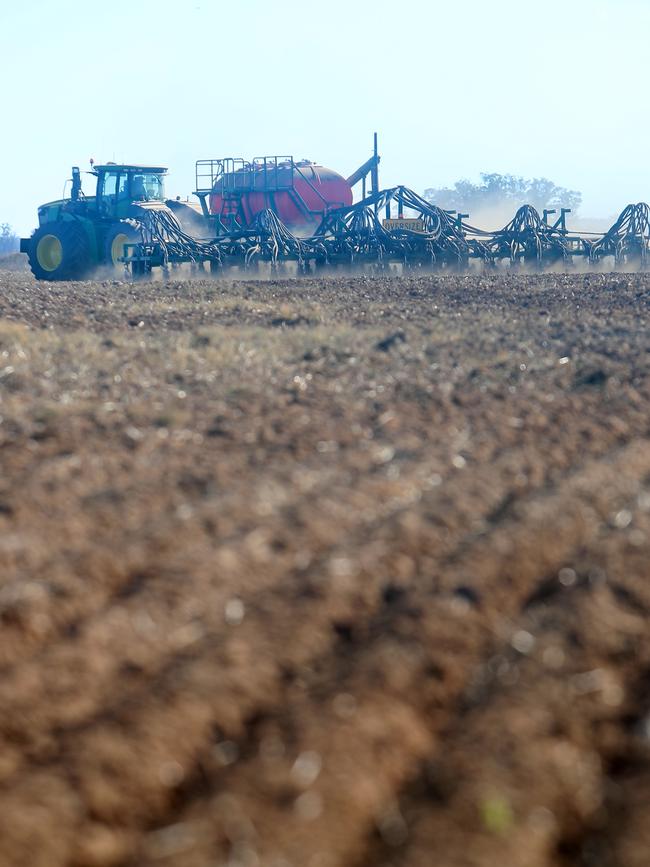Growers weighing up canola risk in a dry year
With persistent dry conditions growers are carefully assessing their winter crop rotations. See what it means for canola.
Canola is a barometer of winter crop sentiment, and in 2025, dry conditions have led some growers to plant it, while others are removing it from their rotations.
The decision is being influenced more by agronomic factors than the price because the oilseed crop has rallied in value recently to settle at $830 a tonne in Melbourne for non-genetically modified varieties.
Statistically canola is tipped to remain solid with the United States Department of Agriculture’s Foreign Agricultural Service forecasting the Australian 2025-26 crop at 6.15 million metric tonnes.
If that forecast comes to fruition it would be 3.5 per cent higher than last year’s canola crop. However, some farmers say they will opt out of canola this year because of low soil moisture levels.
Ryan Milgate from Minyip has pulled canola from the rotation and it isn’t the first time he has dropped the crop in a tough year.
“We have done it before, in 2013 and 2015,” he said.
Mr Milgate said he was fortunate to have options such as growing hay crops or adding lentils as a break in the rotation.
“As much as anything, it is about our subsoil moisture, which is low, and I see it as being risky,” he said.

Mr Milgate said he would start sowing some hay crops in the next week or so before moving onto the main winter crop varieties by Anzac Day.
He will sow oaten and vetch hay, lentils, wheat and barley.
To the north at Rutherglen, farmers received 30mm to 50mm of rain last month.
Andrew Russell from Rutherglen said he had started sowing but it was a different level of confidence because crops were being planted into enough subsoil moisture to germinate.
“We are in a much better position than some of the drier areas,” he said.
Mr Russell said he understood people assessing the risk of the current season and what it meant for late, or even staggered germination.
“There is canola and winter wheat going in at the moment, and we started (sowing) here last week,” he said.
Oliver Collins has been sowing canola for Daniel Lavis at Hopefield in the past week.
They took the decision to sow dry but were hopeful of some in-crop rainfall.
Mr Lavis said they sowing started a couple of weeks ago but conceded the season was very much unknown territory.
“Every year is different in this game ... and what we are doing at the moment is very marginal,” he said.
Mr Lavis said there was about two weeks’ worth of canola sowing to go before moving on to other winter cropping varieties.
“It doesn’t look like there is any rain on the horizon in this area; it doesn’t look promising,” he said.
In addition to canola he will also plant barley, wheat and faba beans.
Grain Producers Australia chairman Barry Large farms at Miling in Western Australia and said sowing had started in his area.
However, he was concerned for farmers who were heading into the 2025 sowing season with marginal moisture.
“For some people, in South Australia and parts of Victoria, this is the second dry year,” he said.
Overall, he said sentiment in Western Australia this year was better than last when farmers were leaving canola out of the rotation because it was so dry.
This time last year, farmers in the west were returning their canola seed to rural merchandisers.
Australian Oilseeds Federation director Lachy Herbert said canola was expected to be a robust portion of the cropping rotation this year.
However, dry weather in South Australia, Victoria and southern NSW had caused some apprehension about the season ahead.




